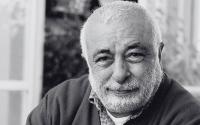15 November 2005Leila Khaled Mouammar
Palestinian Plurality/Israeli Exceptionalism and the Palestinians of 1948 Part I
*In the way of introductions . . .*
There are over 9 million people worldwide who self-identify as Palestinian. A little more than 4.5 million of them live on the land alternately known as "Mandate Palestine," "Israel and the Occupied/Administered Territories," "Israel/Palestine" or any other number of names, depending on whom you speak to and when.
As one of many million Palestinians born outside of the disputed land in question, I admittedly prefer, "Palestine." In this two-part article series, I use the terms "1948 Palestine" and "1967 Palestine" to refer to the lands of "Israel and the Occupied/Administered Territories," with the years denoting when the lands fell under Israeli occupation.
When I do use the term "Israel", it is used primarily to refer to government or other agencies acting in that name, and not to the land or its people.
I do this consciously and purposefully, because it challenges a false dichotomy perpetuated through the use of this seemingly harmless lexicon. For the phrase implies that the entity that calls itself "Israel" is a legitimate state with recognized borders in its present form, and that it is only the "occupied" or "administered" lands that are the subject of current dispute. This misleading construction absolves Israel of any responsibility for its colonial, expansionist foundations and the ensuing process of internal colonization of a land and its people, that continues to this day.
Further, using the word "Israel" to refer to a geographical area of land leads to imprecision and confusion, since the government of Israel has never made an official declaration to the international community as to where its borders actually lie.
Israel also illegally annexes land, as it has with the annexation of East Jerusalem in 1967, and the Golan Heights in 1981. Land expropriations in both 1948 and 1967 Palestine continue today, with respective examples including the demolition of 18 homes in Kfar Kassem in March 2003, and more notoriously, the building of the 8-metre high concrete wall that extends well into, and around cities and towns of 1967 Palestine.
So when referring to the people sometimes called the "Arabs of Israel," who form the general focus of this article, I will use "Palestinians of 1948," meaning Palestinians residing in 1948 Palestine, and as contrasted against the "Palestinians of 1967." And with that lengthy lexicological explanation out of the way, it is time for some
*history & context.*
Palestine has always been much coveted, located as it is between three continents, an important stop on trade routes by land or sea. It has been ruled by many empires, its people are the product of many nations, and many groups have laid claimed to it for religious reasons because of its central role to the formation of Islam, Christianity, and Judaism.
While the present conflict is often characterized as a religious one, such an analysis is grossly misleading. For while the Jewish yearning for a return to the "Kingdom of Israel" has been a key religious precept for millenia, it was the very real political machinations by British and European elites that played the more instrumental role in the formation of the Jewish state.
For example, the idea for a Jewish state in Palestine was first politically advocated for by Napoleon in an official proclamation dated 20 April 1799. Napoleon had intended to unveil the proclamation after capturing Jerusalem but was defeated in the coastal town of Acre by the British before he could get there, and the proclamation became a paper relic of history.
Some forty years later, an 1839 census of Jews in Palestine, carried out by Sir Moses Montefiore, indicated a small population of 6,408. They lived as a part of a total population of roughly 350,000 in early nineteenth-century Palestine, as indicated from the Ottoman Empire's census records.
Rapid increases in Jewish immigration in the latter half of the 19th century coincided with, but also preceded, the publication of Theodor Herzl's Der Judenstaat in 1895 - the pamphlet often credited with putting forth the ideology of political Zionism with the creation of a Jewish state in Palestine as its goal.
In 1896, Baron Maurice de Hirsch founded the Jewish Colonization Association (renamed the Palestine Jewish Colonization Association in 1924), in order to acquire land, to facilitate Zionist plans for Jewish immigration and settlement.
After the end of WWI, Britain took control of Palestine under a temporary Mandate from the League of Nations, permitting them to administer the area until a government representing the indigenous population could be set up. But as early as 1917, the British had already made a commitment to the establishment of a Jewish national home in Palestine, through a correspondance between Lord Balfour and Edmond de Rothschild, that came to be known as the Balfour Declaration.
While British census records from 1931 Mandate Palestine recorded a population composed of 861,200 Muslims, Christians, and Druze, and 174,000 Jews, Jewish immigration to Palestine, susbsidized and encouraged by Zionist financiers like de Hirsch and de Rothschild, did manage to increase the Jewish population from 15% to 31% by 1945. Land ownership for the same group remained however, a mere 6% of Mandate Palestine.
In 1947, over the objections of the majority of the population, the United Nations recommended the partition of the land into two states, Arab and Jewish, allocating slightly more than half to the newly arrived Jewish settlers.
In the months leading up to the official outbreak of the May 1948 war, that Palestinians call al-Nakba ("the catastrophe"), Jewish militias, like the Haganah and the Irgun, ethnically cleansed areas slated to form part of the new Israeli state and beyond. They used massacres against civilians, like that at Deir Yassin where up to 240 were killed, to send the Palestinian population into panic.
Armies from surrounding Arab states entered the war arena, failing dismally to reverse Zionist victories. By the end of the war, 78% of Mandate Palestine was under Israeli control.
Three-quarters of a million Palestinians were made refugees.
UNRWA's registry record for 1950 estimated that only 150,000 Palestinians remained within 1948 Palestine when the armistice agreement was signed in 1949, with some 46,000 of those being internally displaced, having lost their homes and often, entire villages.
The Palestinians of 1948 thus awoke to life under military administrative law, that was applied exclusively to non-Jewish citizens from 1948 to 1966.
They needed travel permits, issued by Israel, to move between towns that only months before were easily accessible. They were cut off too, from the wider Arab world, who had refused any contact with Israel to avoid legitimizing the colonial project.
And they went from being a well-established, majority, indigenous population, living sustainably for centuries in the land of the ancestors, to a fragmented, uprooted, minority, whose rights and opportunities were dictated by a hostile, colonial state system where discrimination based on religion and ethnicity was the salient new reality.
It could not be otherwise in a state that has no constitution, and that according to its own declaration of independence, was created by "the members of the National Council, representing the Jewish people in Palestine and the Zionist movement of the world," for "the establishment of the Jewish State in Palestine, to be called ISRAEL."
*1948 Palestine and 1967 Palestine: two faces of the same Israeli colonial coin *
The twin pillars of Jewish immigration and Jewish settlement are what underpin the Zionist national project. The strategy of building Jewish colonies on high ground, next to existing Palestinian towns and cities in 1967 Palestine, has its antecedents in 1948 Palestine.
For example, Israel founded the colony of Nazaret Illit in 1957 on a hilltop overlooking the largest Palestinian city in 1948 Palestine, Nazareth. It began as a settlement of 300 people with the last official census of 1983 counting 21,000 residents, largely Jewish immigrants, 3,700 of whom were born in Europe or America, 5,000 in North Africa, 1,200 in Asia.
Nazaret Illit has prevented Nazareth from expanding to accommodate the natural growth of its population of 70,000. Nazareth's development has also been impeded through municipal underfunding - with Arab municipalities in 1948 Palestine receiving 1/4 of the funding of Jewish municipalities.
In the late 1960s, Palestinians began moving into Nazaret Illit. In 1972, they numbered 600, or 4 % of the total; in 1989 they were estimated at 3,400, or 13.5% of the total.
Maintaining the identity of a Jewish state is thus complicated by the presence and growth in numbers of the Palestinians of 1948.
By the end of 2002, the Israeli Central Bureau of Statistics estimated its citizen holders to number 6,631,000: 5,093,000 Jews (76.8%), 1,538,000 (23.2%) non-Jews, the majority of whom are Arab (19%). Growth rates for different religious communities for 2002 were determined to be 1.4% for Jews, 3.4% for Muslims, 2.1% for the Druze, and 1.3% for Christians.
The government of Israel, like most colonial governments, has studied past models for controlling and assimilating indigenous populations, including the reservation system employed in Canada.
The non-Jewish population had to be contained for the Zionist colonial project to be successful, and so the government set about dividing the land and the population, according differential rights and responsibilities, to different sects and communities amongst the non-Jewish population.
This intention is reflected, for example, in the categories for the 1961 Central Bureau of Statistics census, where the population was broken down into 1,932,400 Jews and 250,000 non-Jews - the two major categories of pressing import to a Jewish state. The non-Jewish population is further broken down only into rough categories: 24,000 Christians, 24,000 Druze, with Circassians, Bedouins and Muslims making up the remainder.
Mandatory military service is required of all Israeli Jews, with some religious exceptions. Of non-Jewish citizenry, mandatory military service is required only of the Druze and Circassian communities, eventually leaing to the voluntary enlistment of some Bedouins.
Military administrative law for Druze communities ended in 1962, four years before it ended for the rest of the non-Jewish population, and there are many other explicit benefits tied to military service, such as access to certain forms of state financial assistance, that provide additional incentives to serve.
Israel has also tried severing connections between the Palestinians of 1948 and those of 1967. The military administrative law to which the Palestinians of 1948 were subjected, was lifted a year before Israel occupied the West Bank, Gaza, East Jerusalem, the Golan Heights of Syria, and the Sinai of Egypt.
Yet, despite difficulties in transport between the areas, connections between Palestinians of 1948 and 1967 have persisted.
For example, in an April 2002 issue of the Discrimination Diaries provided by the Arab Human Rights Association, a Palestinian from Nazareth writes:
"The people of Nazareth and Jenin had exactly parallel political, social and development histories until 1948. Then from 1948 until 1966, the Palestinian community inside the borders of the new Israeli state was under military occupation - Nazareth - while in Jenin life went on as normal under a new Jordanian authority.
In 1966-7 the roles were reversed: the military rule stopped in Nazareth and a new occupation was begun in the West Bank. When the people of Nazareth were able to resume the level of communication and trade that had existed before 1948, they realized that military occupation was another shared experience - just at different times.
The first intifada, with its widespread civil disobedience and strikes, halted these renewed relations from 1987 to 1993, but after the Oslo Peace Accords were signed they returned stronger than before."
Part two continues with *Refugees in their own land . . . *
http://www.zmag.org/sustainers/content/2004-11/15mouammar.cfm






